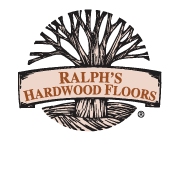Subflooring is one reason inexperienced DIYers shouldn’t try to install their own hardwood floors. Not only do you have to think about the installation itself, you need to ensure you have a good base for it. Understanding subfloors and how they affect hardwood flooring is one of the primary skills a hardwood installer should have.
There are different types of subflooring that impact the hardwood floor installation process. The most common are:
Plywood
The thin sheets of plywood provide a solid base for hardwood floors as they are interlocked securely. Usually, solid wood flooring that is 3’’ to 4’’ wide can be installed directly over plywood subfloors.
We look for one sheet of plywood with a minimum thickness of ¾”. Occasionally, we install over thinner material, but we inspect the conditions before doing so. The hardwood flooring is installed across the floor joists to ensure proper support.
Oriented Strand Board
Oriented Strand Board (OSB) consists of sheets made of wood chips. It must be nailed and glued to the floor joists.
Solid hardwood floors work well with OSB, but they must be installed at a 90-degree angle across the floor joists. Thin OSB is okay, but plywood is required below it.
More Than Meets the Eye
As you can see, there’s more to subfloors and hardwood floor installation than it may seem, and knowledge is essential for a successful installation. A lot depends on the type of subfloor and hardwood, as well as the look you wish to achieve.
Experienced hardwood installers like you’ll find at Ralph’s know exactly what to do to avoid problems with moisture, creaking, uneven floors, or subsequent floor damage. That’s the experience you need.















